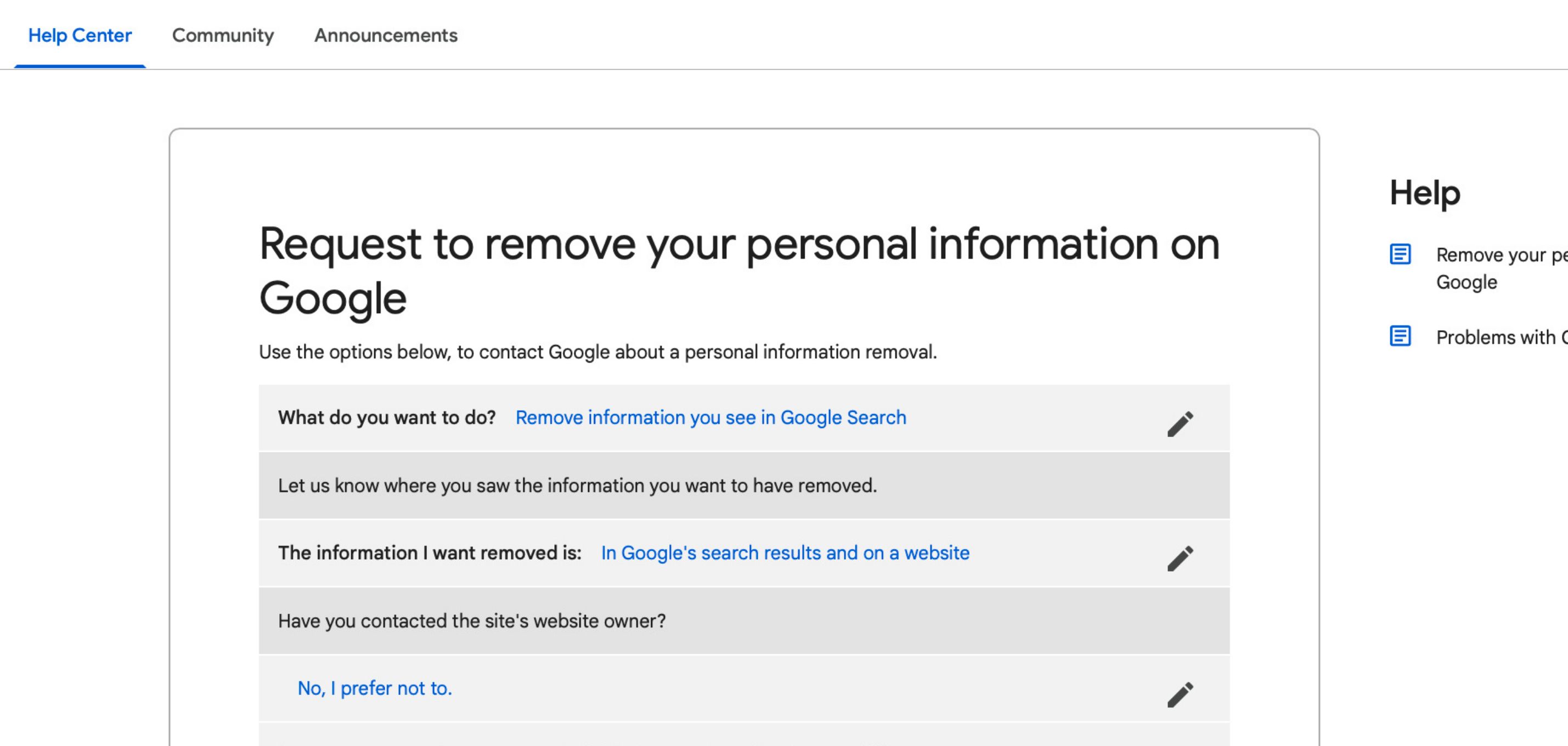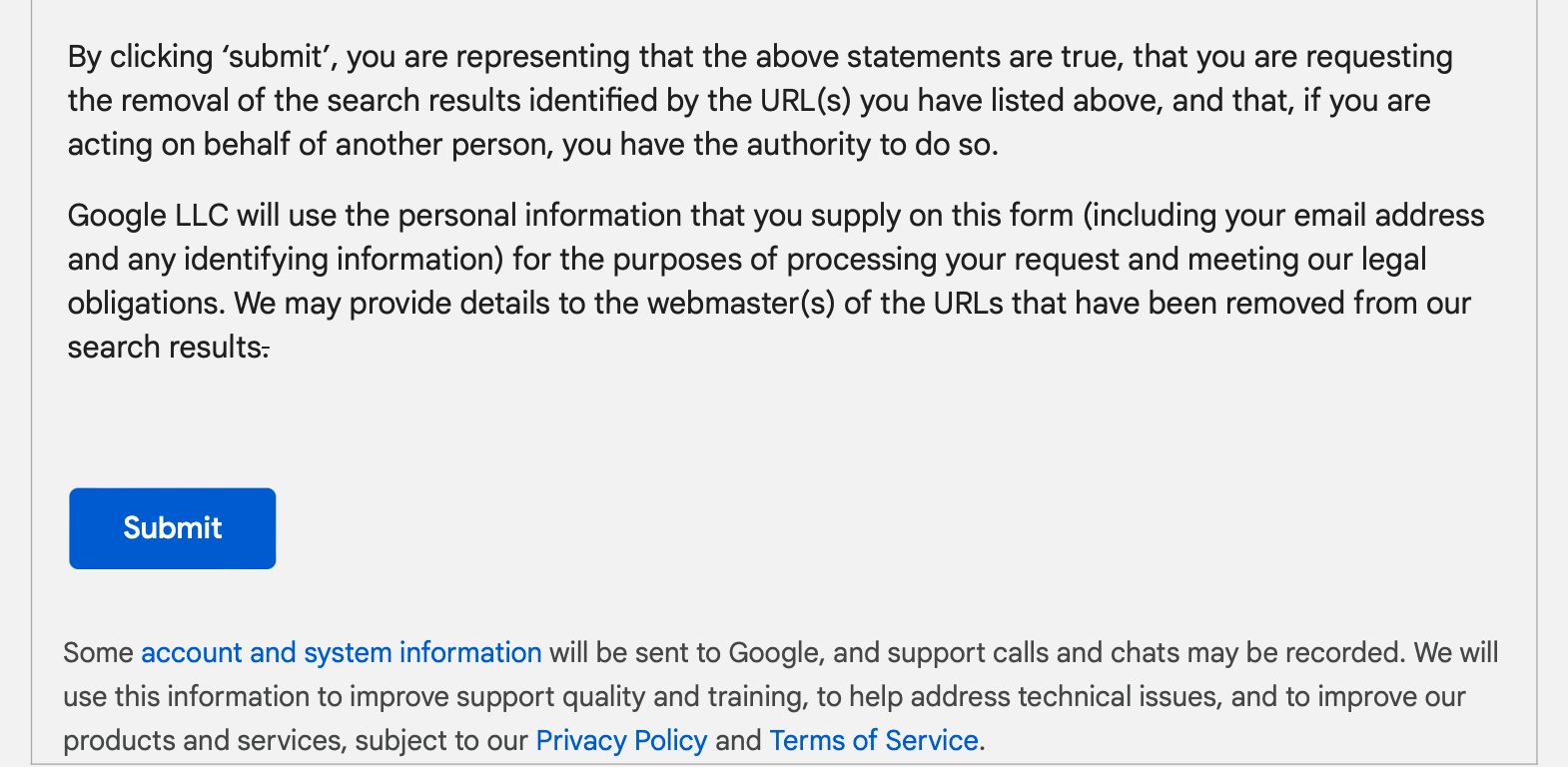The presence of your personal information online represents a potential security risk. Although some of this information may seem harmless, it could cause many problems in the wrong hands. Your responsibility is to ensure that your sensitive personal information is not out there for anyone to access.
To access your personal information, people with malicious intentions typically begin with a simple Google search. How can you ensure that Google doesn't bring up your personal information when people search for it? Here's how to go about it.
Why Should You Be Concerned?
A phone number, email address, or maybe a home address on Google search results doesn't seem alarming. You've probably willingly given out that information to dozens of people. So why should you be worried that a few more people may find it online?
You're likely only giving out your personal information to a close group of people—family, friends, coworkers, or business associates. When you provide your personal information to this closed group, you believe they have good intentions.
However, when your personal information is on a public space like the internet, the whole dynamic changes. You lose control of who has access to that information and for what purpose.
Malicious individuals can look up this information and use it to scam people using your identity. Furthermore, with images of your driver's license or social security number collected online, scammers can easily assume your identity and commit fraud in your name.
Apart from identity theft, your information could also be used to incite people against you online. Sharing your physical address or contact details alongside allegations of wrongdoing can push people to harass or physically harm you.
There is a long list of things that could go wrong. Fortunately, there's something you can do about that. Since a Google search is one of the most effective ways of finding information about people online, keeping your information away from it is a good place to start.
How to Request a Removal of Your Information From Google Search Results
If you google your name or any other search term and sensitive information about you comes up, Google has a way to help you get rid of it.
To get started, head over to Google Search Help. You'll find a form with questions regarding your request to remove your data from search results. However, the form is a bit tricky.
Depending on your response to the initial questions, you may get a form to complete the information removal process or get redirected to a different page. To ensure everything goes smoothly, answer the questions as seen below:
- For the first question (what do you want to do?), select "Remove Information you see in Google search."
- For the second question (let us know where you saw the information you want to have removed), select "In Google's search results and on a website." Only take this option if you've clicked the search results to find the information you want to remove on an active website.
- For the third question (Have you contacted the site's website owner?), choose "No, I prefer not to" if you haven't contacted the administrator of the site hosting the information to request a takedown.
- From here on, select the type of personal information you want Google to remove from its search result pages. A new form should come up. Provide all the requested information and hit the submit button. Here's a guide on how to request the removal of images of a minor, if you have that in mind as well.
Once you've submitted your request, you should receive a confirmation email. Google will evaluate the request using a range of criteria, including those listed below. It might also ask you to provide more information if the need arises. If the request meets their requirement, you'll receive a notification once an action is taken.
But what are the requirements to get your request approved?
What Kind of Information Can You Request to be Removed?
While Google can accept your request to remove a wide range of personally identifying information, the information should ideally be:
- Images of your identification documents, like a driver's license;
- Images of your handwritten signature;
- Images of a minor;
- Sexually explicit pictures of you shared without your consent;
- Bank account and credit card details;
- A confidential government-issued identification number, like your Social Security Number (SSN);
- Personal or official records like your medical records; and
- Login credentials
As of April 2022, you can also request the removal of personal contact information like your phone numbers, email addresses, and physical addresses.
However, even when your request meets all the requirements above, Google might still decline your request if the information you want to remove is:
- In the interest of the public (e.g., if you're trying to remove information related to your professional misconduct in the past, it might be declined)
- Newsworthy (e.g., journalistic articles containing your personal information)
- Provided by a government or other official sources (e.g., FBI)
If the content you want to be removed no longer appears on the web page that published it, the search company advises users to use Google's Outdated Content Removal tool instead.
What Happens When Your Takedown Request Is Granted?
Since Google search is just a search engine, Google would only be able to remove the copy of that information they've cached or simply stop it from coming up on search results. The original copies will likely remain on the site that published them.
However, if the site that published the information is hosted by Google's blogging platform (Blogger), you can use Blogger's content policy violation tool to get the content taken down. If the site administrator keeps repeating similar violations after the initial takedown, Google might go as far as taking down the entire blog or suspending the owner's Google account.
If you want to remove your personal information directly hosted on any of Google's products, you can use the more wide-reaching Google Troubleshooter tool.
Share Your Personal Information With Caution
The best way to safeguard your personal information online is to ensure it doesn't show up there in the first place. Whenever it is necessary to share your personal information, share as little as possible.
As alternatives to your email address, you can use temporary email addresses from providers like temp-mail.org. You can also share only disposable phone numbers with websites that require them.
Irrespective of how big or safe you think a website may be, exercise caution in sharing sensitive information. Data breaches often happen, and your sensitive information could be caught in the crossfire.


.jpg)

